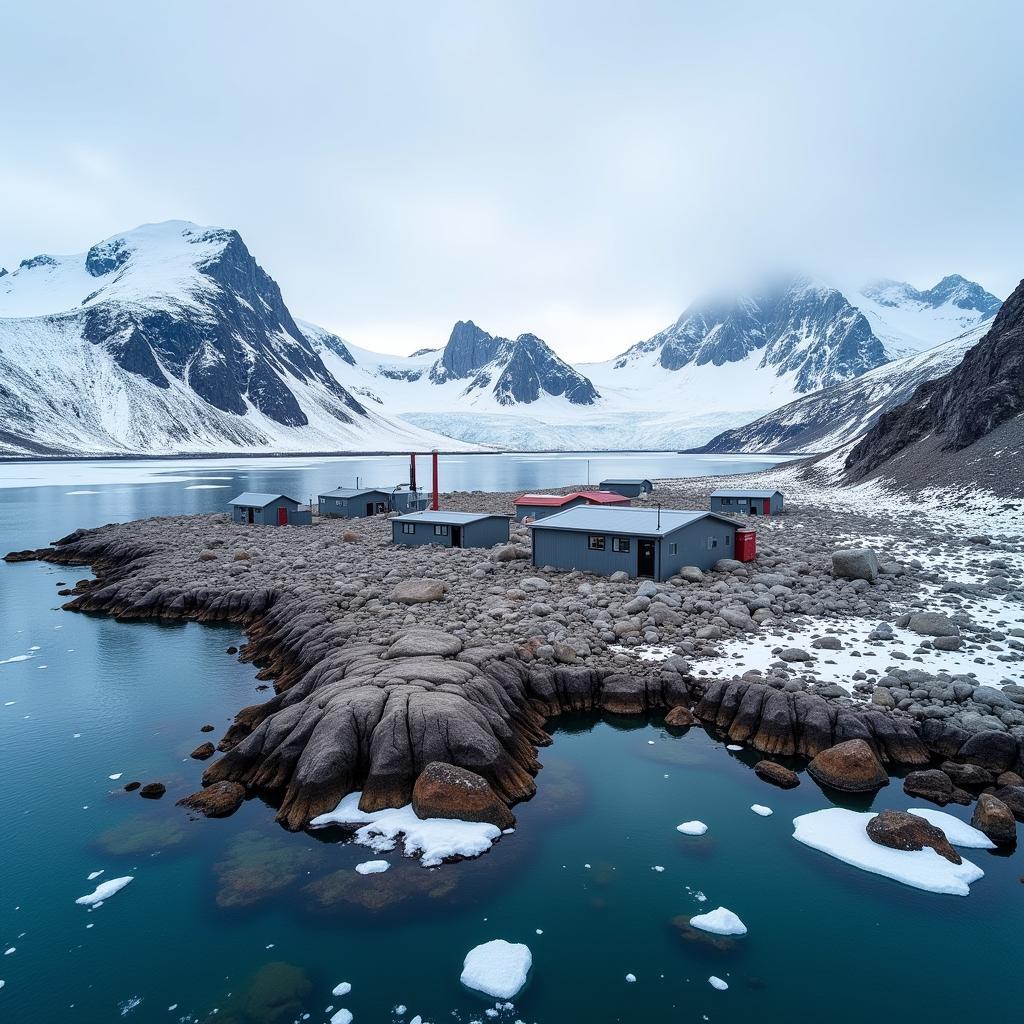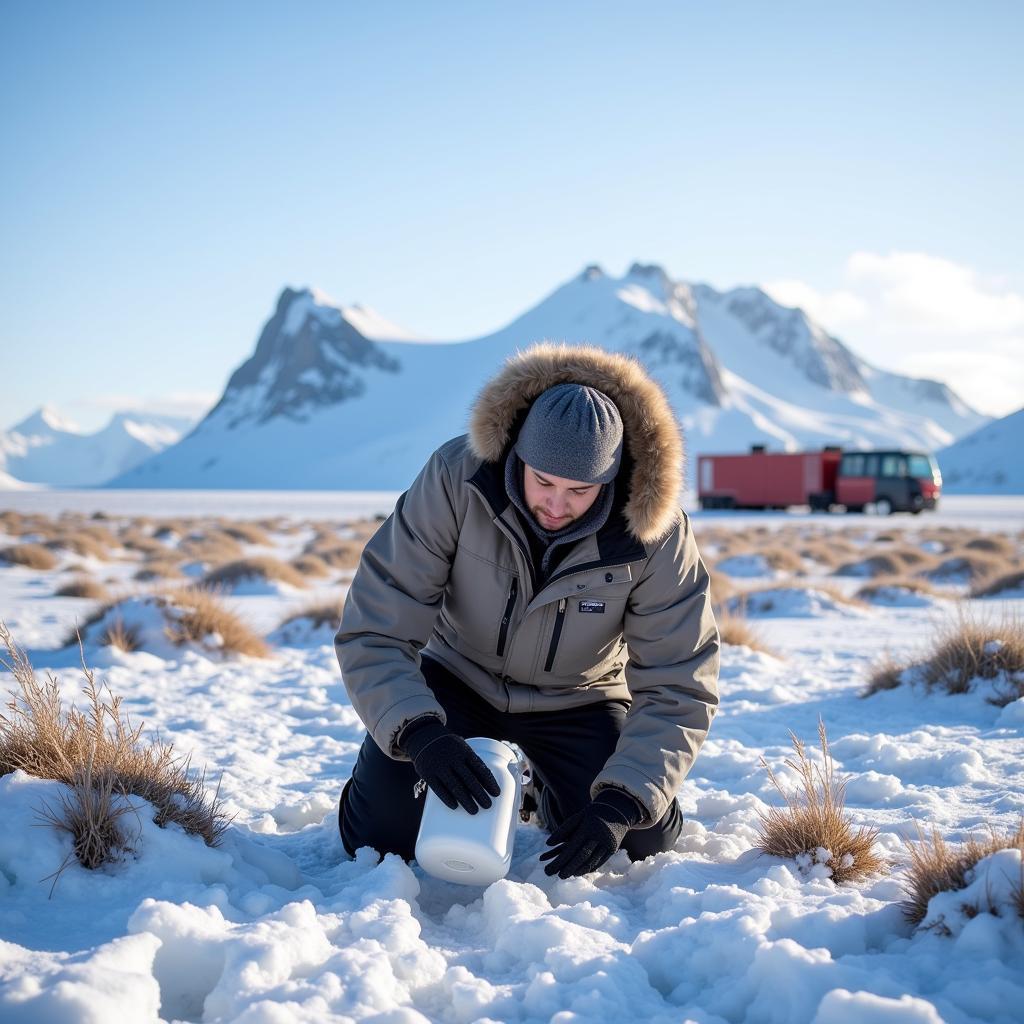The Signy Research Station, nestled in the remote Orkney Islands of Antarctica, is a hub for groundbreaking scientific research. This article delves into the fascinating world of Signy, exploring its history, research focus, and the unique challenges of operating in this extreme environment.
A Beacon of Science in the Antarctic Wilderness
The British Antarctic Survey (BAS) established Signy Research Station in 1947, initially focusing on whaling research. Over the decades, the station’s focus shifted to understanding the unique Antarctic ecosystem, particularly its response to climate change. Signy’s strategic location offers scientists unparalleled access to diverse terrestrial and marine environments, making it a critical site for long-term ecological studies.
The Heart of Antarctic Ecosystem Research
Signy Research Station is renowned for its research on various aspects of the Antarctic ecosystem. These include:
- Terrestrial Ecology: Scientists study the diverse plant and invertebrate communities, investigating their adaptations to the harsh Antarctic conditions and the impacts of environmental change. Specific research focuses on mosses, lichens, and the unique springtails that inhabit the region.
- Marine Biology: The surrounding waters teem with marine life, offering opportunities to study seals, penguins, and a variety of fish species. Signy’s researchers investigate the intricate relationships within the marine food web and the effects of climate change on these populations.
- Climate Change Impacts: The station’s long-term data sets provide invaluable insights into the effects of climate change on the Antarctic environment. Researchers monitor temperature fluctuations, ice melt patterns, and changes in species distribution and abundance.
 Signy Research Station Aerial View
Signy Research Station Aerial View
Life and Work at Signy Research Station
Operating a research station in the remote Antarctic presents unique challenges. The isolated location requires meticulous planning and logistical support. The station is only accessible by ship during the summer months, and the harsh winter conditions necessitate careful preparation and self-sufficiency.
A Day in the Life of a Signy Researcher
A typical day at Signy varies depending on the specific research project. It can involve fieldwork in extreme conditions, laboratory analysis, data entry, and maintenance tasks to keep the station operational. Collaboration and teamwork are essential for success in this demanding environment.
The Challenges of Antarctic Living
Living at Signy requires adaptability and resilience. The long periods of darkness during winter, the extreme cold, and the isolation can be psychologically challenging. However, the stunning natural beauty, the close-knit community, and the opportunity to contribute to groundbreaking research make it a rewarding experience.
 Signy Researcher Collecting Samples
Signy Researcher Collecting Samples
The Future of Signy Research Station
Signy Research Station continues to play a crucial role in Antarctic science. The station is undergoing upgrades and modernization to enhance its research capabilities and improve living conditions for its staff. The ongoing research conducted at Signy is vital for understanding the delicate balance of the Antarctic ecosystem and informing global conservation efforts.
Why Signy Research Matters
The research conducted at Signy Research Station has far-reaching implications. It helps us understand the impact of human activities on the planet, particularly in relation to climate change. The data collected at Signy contributes to global efforts to protect this unique and fragile environment.
“The long-term ecological data sets from Signy are invaluable for understanding the impacts of climate change,” states Dr. Emily Carter, a leading researcher at the British Antarctic Survey. “This research is critical for informing policy decisions and guiding conservation strategies.”
 Signy Research Station Lab Interior
Signy Research Station Lab Interior
Conclusion
The Signy Research Station stands as a testament to human ingenuity and scientific dedication. Its continued operation is crucial for unlocking the secrets of the Antarctic ecosystem and addressing the pressing challenges of climate change. The research conducted at Signy is not just about understanding Antarctica; it’s about understanding our planet’s future.
FAQs
- Who operates Signy Research Station? The British Antarctic Survey (BAS).
- When was Signy established? In 1947.
- What type of research is conducted at Signy? Primarily terrestrial and marine ecology, with a strong focus on climate change impacts.
- Where is Signy located? In the South Orkney Islands, Antarctica.
- How accessible is Signy? Only by ship during the summer months.
- What are the main challenges of working at Signy? The extreme climate, isolation, and logistical difficulties.
- Why is Signy research important? It provides crucial data for understanding the Antarctic ecosystem and the impacts of climate change.
Need assistance? Contact us 24/7 at Phone: 0904826292, Email: research@gmail.com or visit us at No. 31, Alley 142/7, P. Phú Viên, Bồ Đề, Long Biên, Hà Nội, Việt Nam.